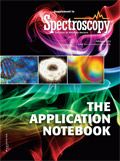The Determination of Mercury in Copper Concentrates by Thermal Decomposition, Amalgamation and Cold Vapor Atomic Absorption
Application Notebook
Mercury is a toxic, persistent pollutant found in many native ores rich in copper, silver and gold. As such ores are processed mercury can be released to the environment.
Mercury is a toxic, persistent pollutant found in many native ores rich in copper, silver and gold. As such ores are processed mercury can be released to the environment. This can be either during the "stamping" process (crushing rocks to "sand") where mercury rich tailings can enter the local watershed or during smelting where volatile mercury can be released into the atmosphere. It is for these reasons and their potential impact on the environment that it is important to be able to reliably measure mercury.
Analytical Approach
Four samples of copper concentrates were acquired and analyzed using a direct analysis technique. The technique involves thermal decomposition of mercury compounds present in the sample through combustion followed by pre-concentration via gold amalgamation and subsequent detection using cold vapor atomic absorption (Figure 1).

Figure 1: Cold vapor atomic absorption illustration.
Instrumental
Oxygen was used as the carrier gas at a flow rate of 350 ml/min. Signal integration was set at 100 s.
The Hydra IIC provides two optical paths of differing lengths to extend its dynamic range, producing both low and high calibration curves. These calibration curves were generated using weighed deposits of aqueous standards in concentrations of 0.1, 1.0, and 10.0 ppm (w/w) mercury. All samples and standards were analyzed using nickel boats.
The low range calibration extended to 40 ng and the high range calibration to 520 ng. Both calibrations delivered linear correlation coefficients better than 0.997; however, a quadratic curve provided a slightly more precise fit for the standards.
Results
Each of the submitted samples was introduced five times. Carryover was determined to be less than 1% by remeasuring the same sample boat with sample residue untouched. A 250 ng standard was run between sample replicates to ensure that no shift in sensitivity had occurred.
More About the Hydra IIc
The Hydra IIC provides a 70-position autosampler and has on-the-fly loading capability for virtually unlimited capacity. Additionally, a conversion kit is available which employs chemical reduction to satisfy the monitoring of drinking water in accordance with US EPA Method 245.1 and European Standards EN1483 and EN13806.
For more information on this application or on Teledyne Leeman Lab Mercury family of products, please visit our website at www.teledyneleemanlabs.com or call 603-886-8400.
Teledyne Leeman Labs
6 Wentworth Drive, Hudson, NH 03051
tel. (603) 886-8400, fax (603) 886-9141
Website: www.teledyneleemanlabs.com

Accurate Microplastics Analysis in Minutes, Not Hours
April 10th 2024The automated Agilent 8700 LDIR chemical imaging system lets you obtain high-quality images and spectral data faster than ever before. So, you can perform confident large-scale microplastics studies and monitoring activities.
Advancing Research of Plastics in the Environment Using the Agilent Cary 630 FTIR Spectrometer
April 10th 2024Plastic pollution has become a high-priority area of study in recent years due to the increasing prevalence of plastics in the environment. Currently, researchers have a limited understanding of the impact of plastic pollution on human health, how it affects wildlife and their habitats, and its long-term effects on the environment. An important step in overcoming this pressing global environmental issue is the advancement of research relating to the identification of plastic waste and microplastic particles.